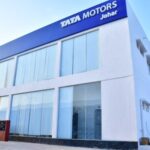[ad_1]
While the Private Final Consumption Expenditure, which contributes 60% to the nation’s gross domestic product (GDP), is a great tool for this, it is released only every quarter as part of the GDP print. Hence, for more frequent and granular data, the Ministry of Statistics urgently needs to “marry” the GST data into its official statistics.
“…. synergy between the national statistical data systems and the GST data system will be extremely useful. That synergy has to be explored urgently and very importantly without much further delay because GST data tells us about consumption in different districts, at the granular level, we can go into pin codes, we can go into a rural-urban split, etc and we need that marriage between the national statistical data system and the GST data system to be able to get,” Nageswaran observed.
The CEA said it is especially important to get a sense of “whether consumers are feeling well, doing well, and inclined to spend and how they perceive their employment prospects etc,” given the results of the RBI’s consumer confidence and industrial outlook surveys. The surveys released last week by the RBI seem to indicate a dip in consumer confidence while demand for manufactured goods seems to have moderated.
“…..there are some emerging concerns that we need to focus on and that will have implications for our economic growth outlook and prospects,” the CEA said.
The Chief Economic Advisor also pitched for state GDP numbers to be more aligned with the economic trends in the country. He said most of the state data comes with a lag, rendering it “practically useless or irrelevant” for decision-makers who need real-time data.
“Any data for a quarter that gets released one quarter later, or any monthly data released after a month has ended, becomes relatively useless from a decision maker’s perspective,” Nageswaran said.
[ad_2]
Source link










